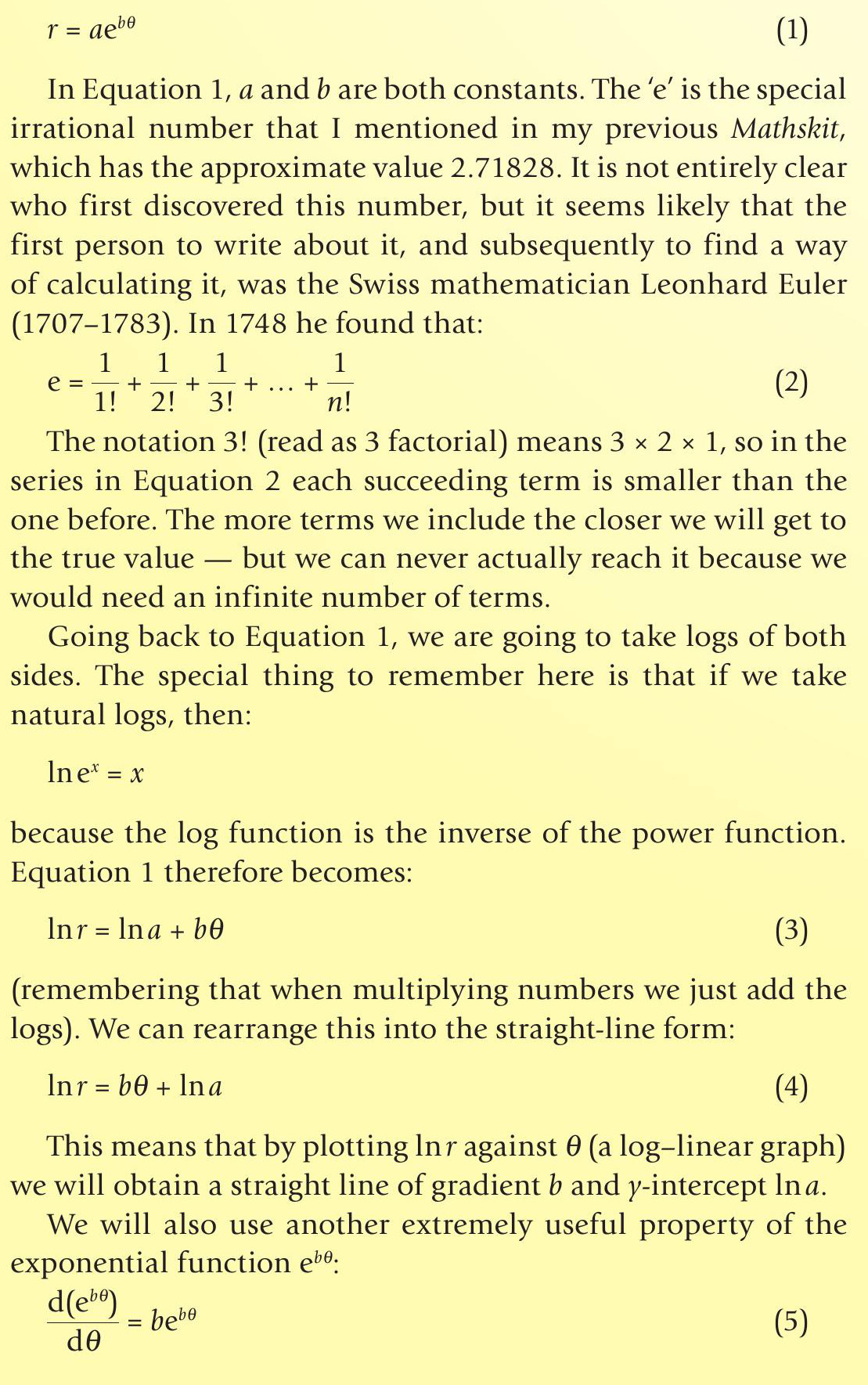
In the last Mathskit (PHYSICS REVIEW Vol. 25, No. 1, pp. 28–29) I explained how to use log–log graphs. The technique will work equally well whether you use common logarithms or natural logarithms — just so long as you are consistent and don’t mix them up in the same equation. Sometimes, however, only natural logarithms will do.
The examples I am going to use in this article are both second-year A-level topics — radioactive decay and capacitor discharge. In each of these new examples we will need to plot a log–linear graph, in order to solve equations of the form:
Your organisation does not have access to this article.
Sign up today to give your students the edge they need to achieve their best grades with subject expertise
Subscribe




